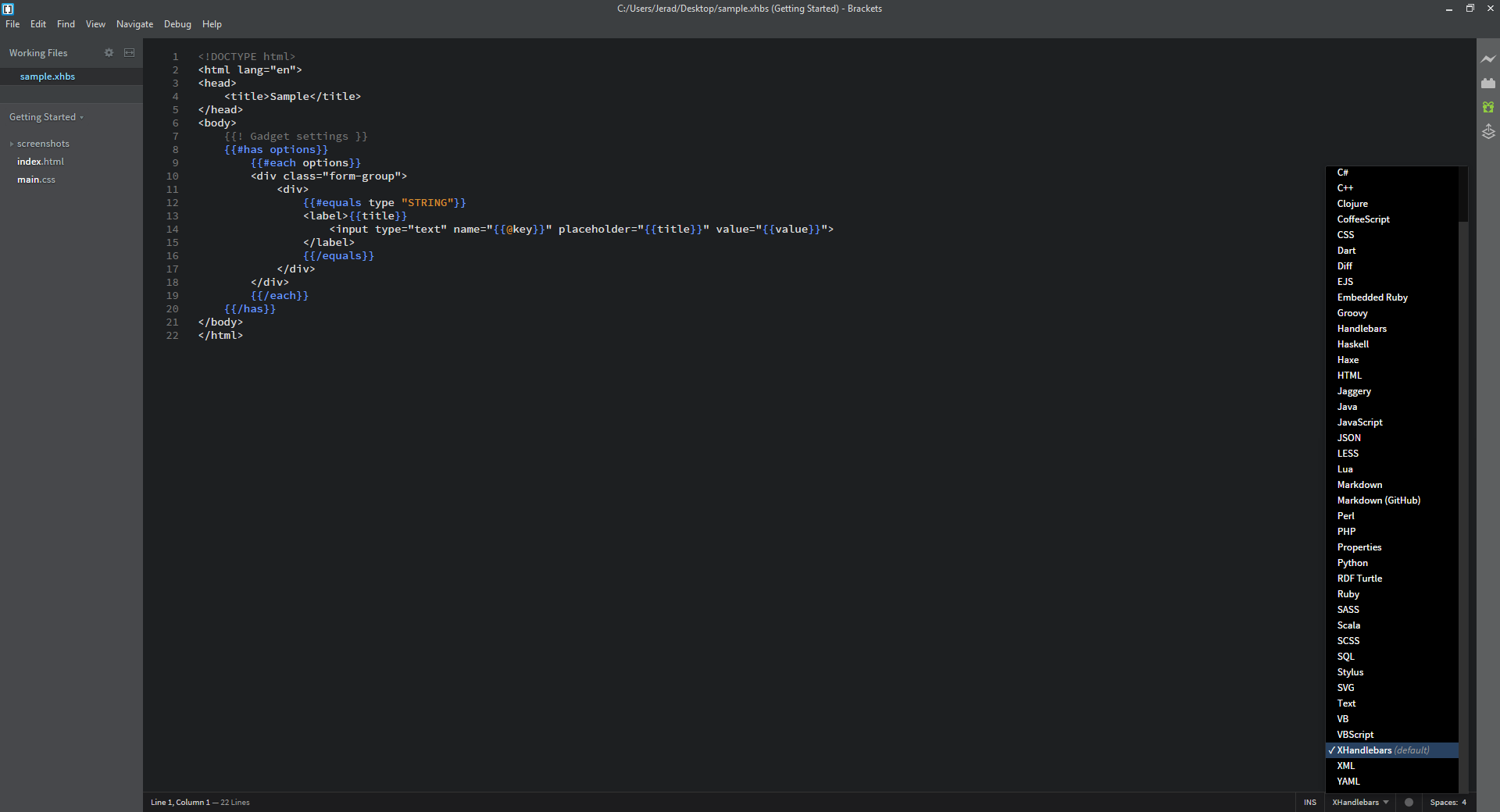Writing a language extension for Adobe Brackets
by Jerad Rutnam -
This documentation guide covers an easiest way to start writing a language extension for adobe brackets.
STEP 1: Navigate to brackets extensions folder

STEP 2: Create folder inside user folder with a custom name
e.g. extensions/user/<custom-extension>/STEP 3: Create 2 files in it as below
e.g.
extensions/user/<your-extension>/main.js
extensions/user/<your-extension>/package.jsonSTEP 4: Here is an sample package.json file
{
"name": "<your-extension>",
"title": "<Your-Brackets-Extension>",
"description": "<Your-Brackets-Extension-Description>",
"version": "1.0.0",
"author": "Name <name@email.com>",
"license": "<MIT>",
"engines": {
"brackets": ">=1.6.0"
}
}STEP 5: And finally main.js should b e something like this
define(function (require, exports, module) {
// importing CodeMirror Module which is already comes with brackets
var CodeMirror = brackets.getModule("thirdparty/CodeMirror/lib/codemirror"),
// importing Brackets LanguageManager
LanguageManager = brackets.getModule("language/LanguageManager");
// Defining a CodeMirror CodeMode
CodeMirror.defineSimpleMode("xhandlebars", {
start: [
{
regex: /<!DOCTYPE[^>[]*(\[[^]]*\])?>/,
token: "comment"
},
{
regex: /\{\{!/,
push: "handlebars_comment",
token: "comment"
}
],
handlebars_comment: [
{
regex: /\}\}/,
pop: true,
token: "comment"
},
{
regex: /./,
token: "comment"
}
]
});
// Defining Langauge MIME Type
CodeMirror.defineMIME("text/xhandlebars", "xhandlebars");
// Defining New Langauge
LanguageManager.defineLanguage("xhandlebars", {
name: "XHandlebars",
mode: ["shandlebars", "text/x-handlebars"],
fileExtensions: ["xhbs"]
});
});STEP 6: Restart Brackets & Test the created exntension by creating a new sample.xhbs file
e.g.
desktop/sample.xhbs<!DOCTYPE html>
<html lang="en">
<head>
<title>Sample</title>
</head>
<body>
{{! Gadget settings }}
{{#has options}}
{{#each options}}
<div class="form-group">
<div>
{{#equals type "STRING"}}
<label>{{title}}
<input type="text" name="{{@key}}" placeholder="{{title}}" value="{{value}}">
</label>
{{/equals}}
</div>
</div>
{{/each}}
{{/has}}
</body>
</html>And you are Done. Langauge extension should detect as below, Now you can play more with RegEx and CodeMirror defineSimpleMode API options to achieve required code highlightings. Furthermore you can read CodeMirror defineMode API for more advance use cases.

